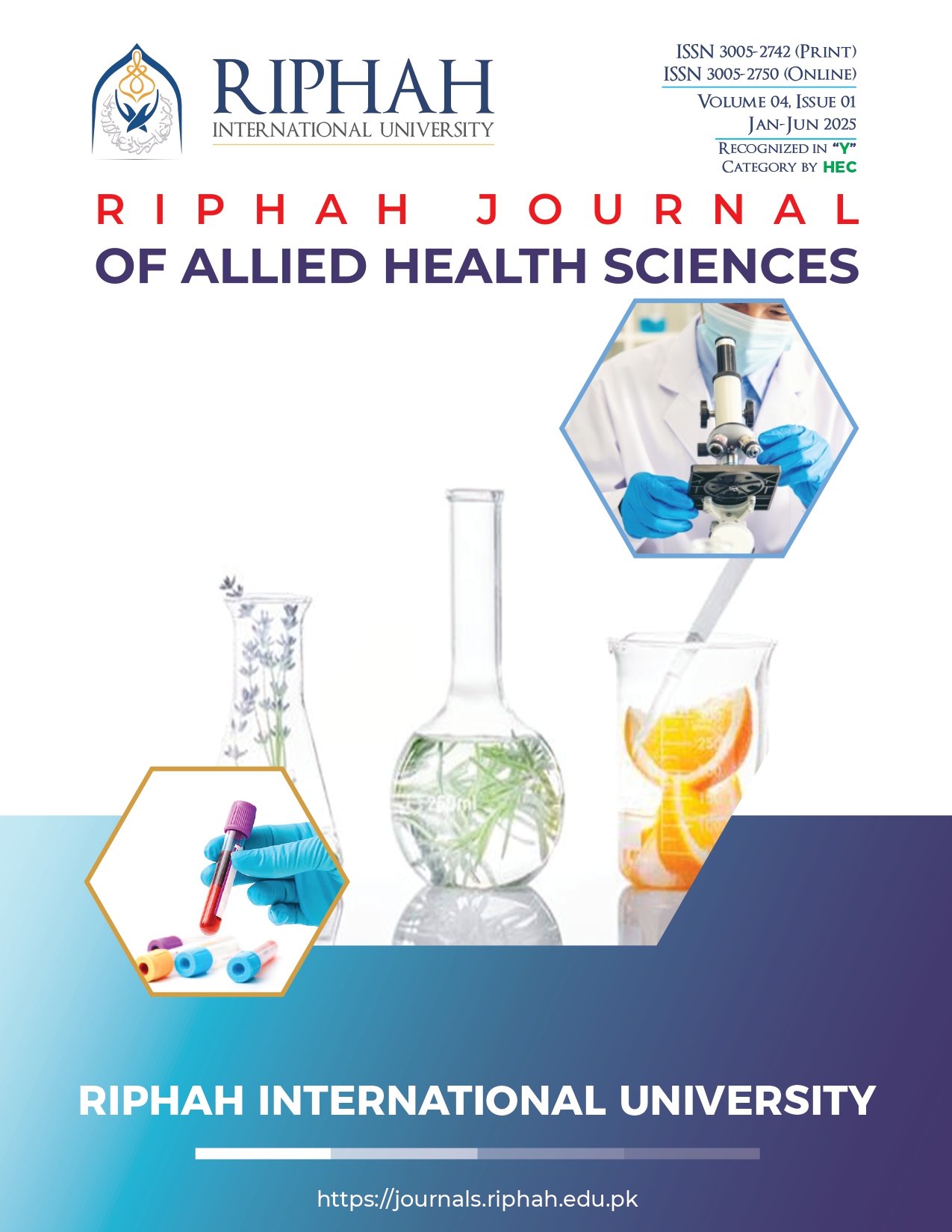Frequency of Uncorrected Refractive Errors in Children age group of 5-15 years in hospital population of Punjab
Keywords:
Refractive Error, Myopia, Hyperopia, Astigmatism, Pediatric refractive errorAbstract
Background: Uncorrected refractive errors (UREs) are a major cause of preventable vision impairment in children, affecting learning and daily activities. If untreated, they can lead to amblyopia, low vision, and long-term visual disability. Early detection and correction are critical to reducing the burden of childhood blindness, especially in underserved regions like Punjab, Pakistan.
Objective: The aim of this study was to regulate frequency of uncorrected refractive errors in children age group of 5-15 years
Methodology: It was a hospital based cross-sectional study. A properly designed and approved pre tested Pro-forma was used for data collection. Data was collected from eye OPD of Benazir Bhutto Hospital, Rawalpindi and Nishtar Hospital, Multan.
Results: This study was conducted on 400 children age from 5-15 Years who were attending Eye OPD. Among the subjects 62.6% were males and 36.9% were females. Age distribution 32.4%(N=130) subject had age 5-10 years and 67.3%(N=270) had age 10-15 years. Distribution of refractive errors there were 53.6%(N=215) myopia,24.2%(N=97) hyperopia and 21.9%(N=88) astigmatism. Distribution of astigmatic errors there were 1.5%(N=6) simple myopic astigmatism and 1.8%(N=7) were simple hypermetropic astigmatism and 10.3%9(N=41) were compound myopic and 5.3%(N=21) compound hyperopic and 2.5%(N=10) mixed astigmatism.
Conclusion: The study concluded that the frequency of refractive errors in children (5-15) was at high risk. Uncorrected refractive errors lead to amblyopia, diseases and low vision. We have to correct refractive errors to avoid amblyopia and low vision.


